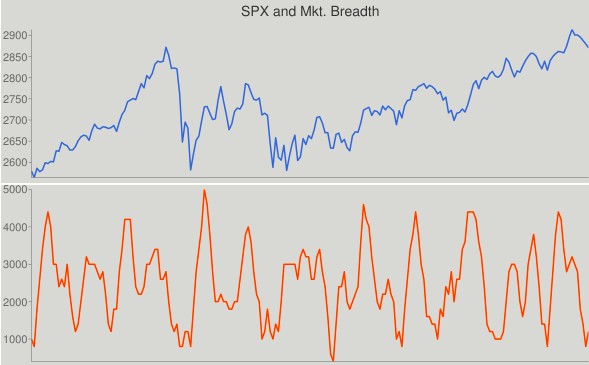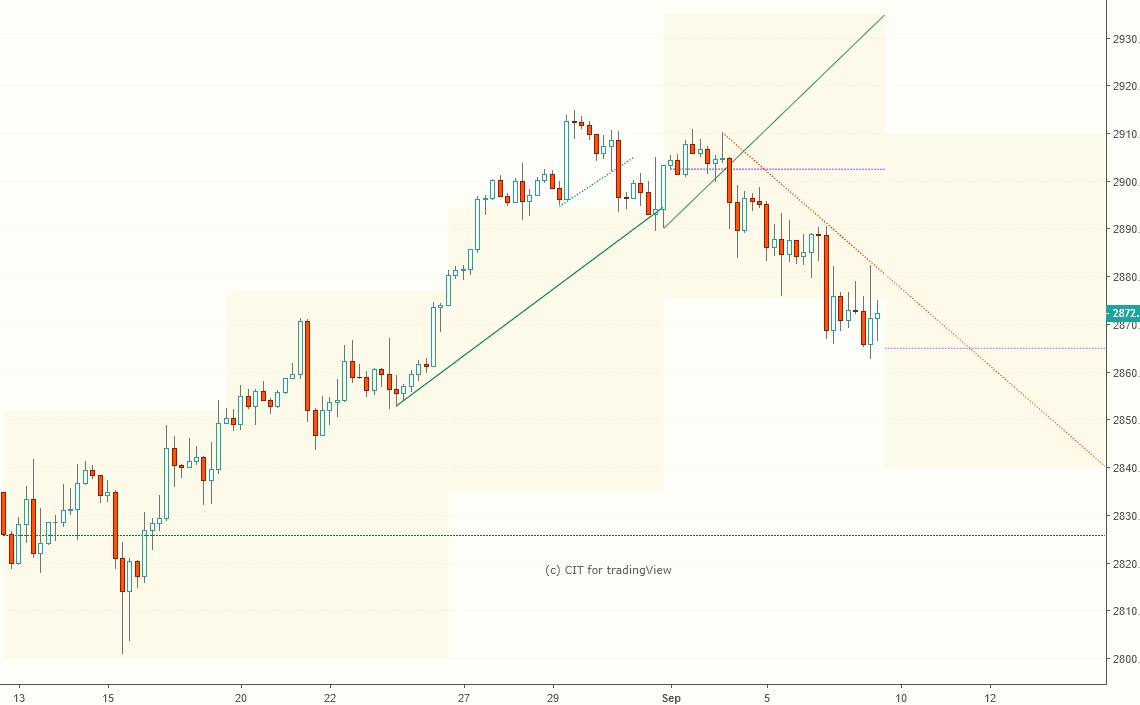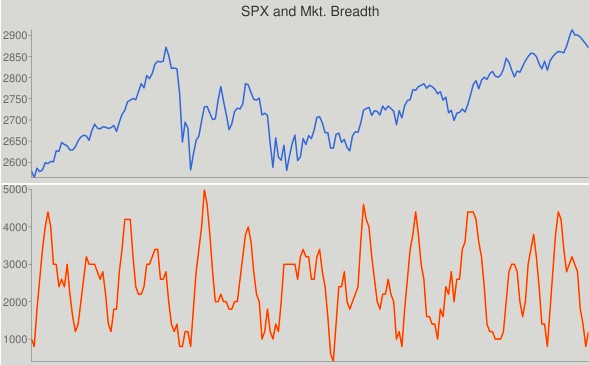The SPX behaved in classic TA fashion and, after making a new all-time high, started September by pulling back and testing the break-out level. In doing so it finished the week just 3 points shy of our downside target and the August high. Therefore, the SPX direction this upcoming week should determine whether the market will keep its bullish trend and continue making higher highs, or whether the current downswing is more than a simple retracement, and lower prices are to follow.
The bullish case is supported by the fact that market breadth is getting oversold, thus suggesting that odds favor the beginning of a new sideways/up phase:

Last week we introduced a simple way to implement next week’s trading range into your work-flow by drawing target angles from recent swing highs and lows, and adjusting them as the trend progresses. In our analysis below we’ll follow the same approach by simply updating the charts with the new targets. To summarize, the rules to follow for swing traders are simple and straightforward: long above the target angle and pivot line (dotted horizontal line), short below.
In addition, paying attention to whether the target rectangle is moving up or down with regard to the previous week should provide additional clues about the direction of the weekly trend. In the case of the SPX, the weekly targets are lower compared to last week, suggesting (in addition to the break below the pivot line) that a change in trend is taking place.
Here are the monthly CIT pivots for SPX.
Pivot: 2903, S1 – 2865, S2 – 2833; R1 – 2940, R2 – 2975
The next SPX CIT date is September 11th.
The projected trading range for next week for SPX is 2840-2910:

Oil retraced 62% of its bullish trend in place since mid-August and reached the projected low target, resulting in an outside weekly reversal (bearish engulfing) candle. The bounce off the low target produced a short-term counter-trend bounce which will remain in place as long as oil trades above the target angle and the pivot line.













Leave A Comment